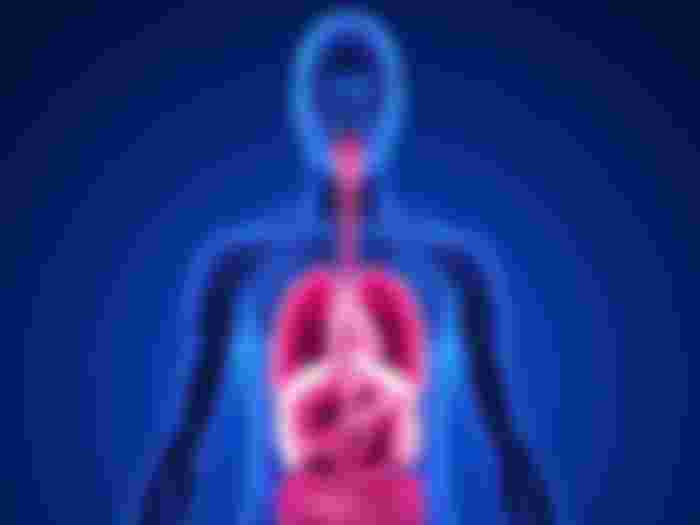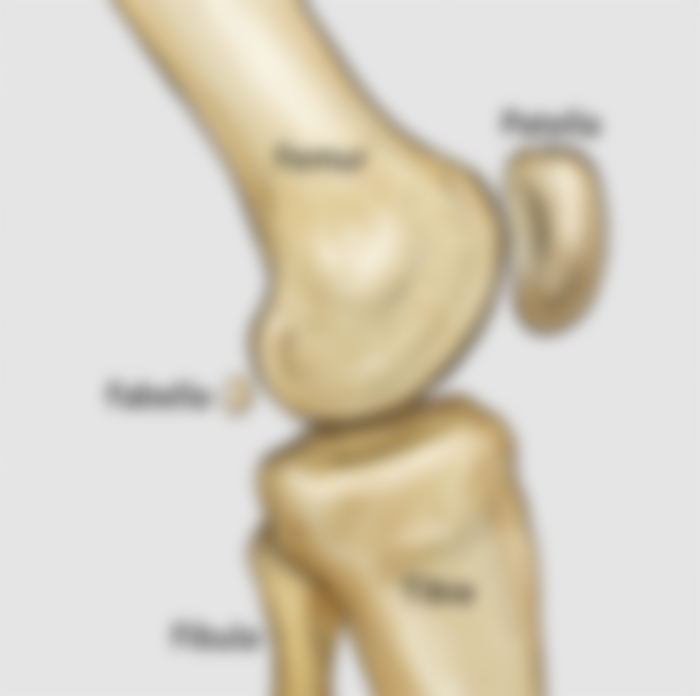Even after hundreds of years of research, there is still a long way to go to understand the mystery of the human body. That is why a subtle part of the human body is being captured in a new way by those who are thirsty for knowledge, sometimes a new path of circulation is seen again. At the same time, the language of physiology is becoming increasingly difficult to understand. Many such discoveries over the past decade have surprised us, as always. Let's learn about some of these parts.

Fabella back?
In a recent Pepsi ad, Salman Khan was seen asking, "How many bones are there in a human body?" Whether it is due to advertisements or from the pages of biology books, we all know that the number of bones in an adult human body is 206. But what if this number increases?
I was talking about a small bone called 'Fabella'. Don't confuse it with fibula! The location of this bean-like fabula is in the middle of the tendon at the back of the knee. You can say, Patella is just the opposite, but much smaller than Patella in shape.
Let's go back to the old world. This fable could be seen on the knees of monkeys of that era. It gradually evolved from the ape's lineage to the 'Great Ape' or chimpanzee lineage, and later to the human body.A team of researchers from Imperial College London has collected the results of more than 21,000 studies on knees conducted in 26 different countries over the past 150 years. The data from the studies were taken by X-ray, MRI or direct dissection. They concluded that in 1918, about 11 percent of the world's population had a fable. And in 2016 this figure came to 39 percent.

The question is, is it at all important to have Fabella? According to many, it has no function in the human body. Many also say that as people gradually become heavier than before, the body pressure on the knees is also increasing. So in many cases Fabella can provide additional mechanical benefits while walking. Some say that the difference in the location of the fable can cause osteo-arthritis or additional difficulties in knee surgery.
Who knows when someone will draw a human skeleton in the future, he might even have to add two extra pencil marks!
Dua's Layer
Eyes speak to the mind! And the cornea speaks mostly about the eyes. Because 75-75 percent of the focusing power of your eyes is in the hands of the cornea. You accidentally hit your cornea by accidentally stabbing a finger in the eye. The thickness of the entire cornea is about 550 microns and up to this five layers have been observed in the cornea.
These layers are differentiated during different eye surgeries in a method called ‘Big Bubble Technique’. This method separates the layers by pumping small bubbles of air between any two layers of the cornea.

In 2013, Harminder Dua, a professor at the University of Nottingham, and his team performed simulation transplant surgery on 31 post-mortem eyes using the Big Bubble method. At this point, much smaller bubbles are pumped than ever before, and effortlessly matches the evidence for the existence of this new dua's layer. Next time its structure is reviewed under an electron microscope. This layer of collagen is about 15 microns thick and is much stiffer and stronger than other layers.
This level of diagnosis and treatment of various diseases of the cornea, including corneal hydrops, pre-December's dystrophy, has opened the door to new research. At the same time, there is no doubt that the difficulty of this level has made corneal transplant or surgery easier than before.
Brain drain
If you have heard of lymphatic system, you must remember that it is compared to the drainage system of human body. Simply put, the excess fluid or waste generated from our tissues that cannot enter the bloodstream directly participates in the re-circulation through the lymphatic system. On the other hand, the soldiers who took part in the prevention of the disease also go through this lymphatic system again.
This is a common thing. But scientists have had to burn a lot of wood to prove the existence of this lymph in the brain. Previously, it was thought that brain fluid or waste would pass directly through the cerebro-spinal fluid and enter the bloodstream.
However, many still have strong suspicions that the brain may have a fine lymph structure. In 2015, two separate studies found evidence of lymph in the Dura Matter part of the rat brain. The skepticism of the scientists is getting stronger and stronger. Needless to say, conventional imaging techniques in the brain did not capture the circulatory system and lymph separately, they looked the same.

Finally, in 2018, a team of researchers was able to prove the existence of lymph in the brains of five people and three monkeys with the help of a new 'staining' technique and a special MRI technique. Tests were performed by dissecting the brains of dead people and monkeys to further strengthen the evidence. There are some cells and proteins that are not found anywhere else except in the lymph.
After matching the existence of the lymphatic system in the brain, scientists must rethink its relationship to other parts of the body. Hopefully, there may be a new equation or solution to Alzheimer's or similar neurological pathology.
This is just a few parts of Hategona. The reptile-like muscle-like part of the embryo's structure, the network of new blood vessels in the bone, the discovery of new microbiome bacteria in the body - the countless examples we've seen recently compel us to say that the human body is a strange device!




very good post.I am a medical student .I know the importance of this post.. Thank you so much.